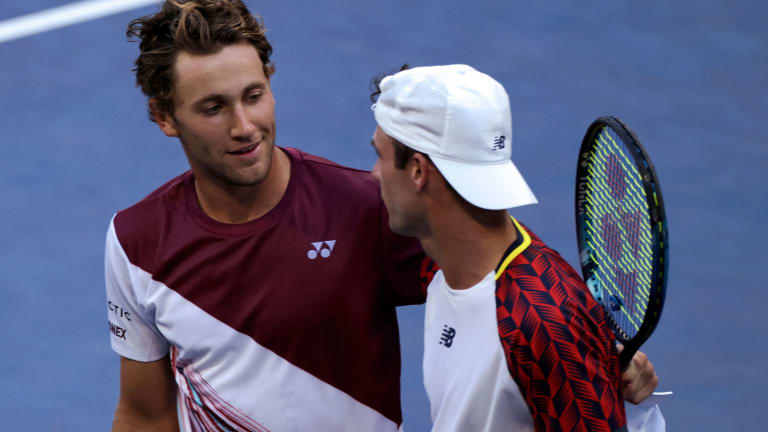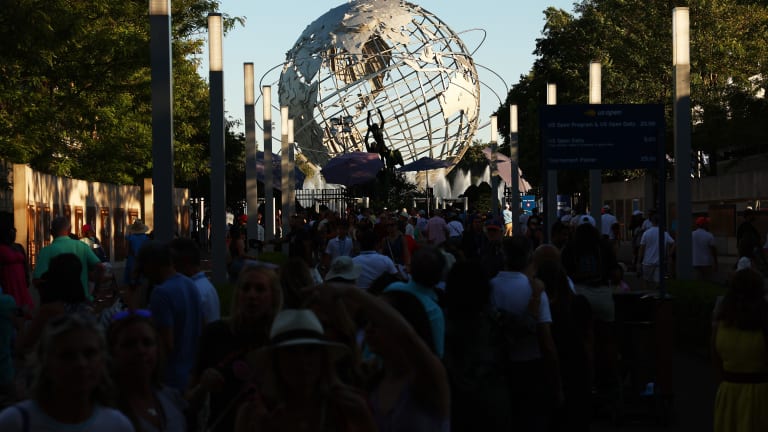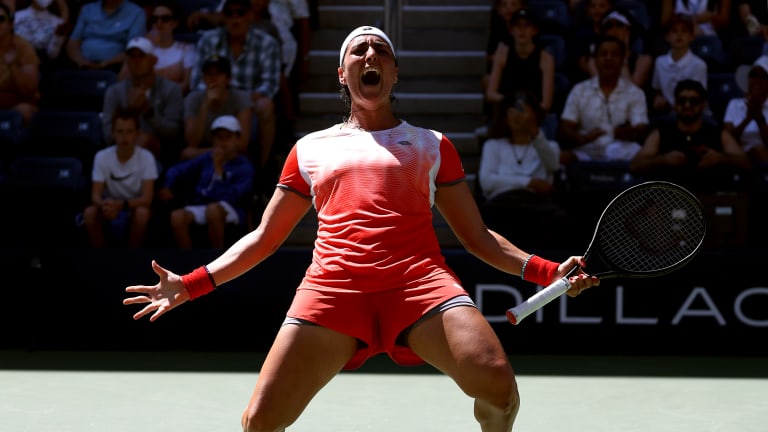US Open
Scenes from Queens, Day 5: Tommy Paul falls in five; Leylah and Sock play mixed doubles; the scene before Serena; Jabeur gives drop-shot advice
By Sep 02, 2022US Open
Eric Butorac will replace Stacey Allaster as US Open tournament director
By Nov 17, 2025US Open
Beyond The Champions: 2025 US Open Winners and Losers
By Sep 10, 2025US Open
In US Open defeat, Jannik Sinner faces his shortcomings
By Sep 09, 2025US Open
Amanda Anisimova's US Open fortnight wasn't just "incredible"—it was redemptive
By Sep 09, 2025US Open
Overcoming Doubt, Finding Deliverance: Six WTA takeaways from the 2025 US Open
By Sep 08, 2025US Open
Service and a smile: How Carlos Alcaraz conquered Jannik Sinner at the 2025 US Open
By Sep 08, 2025US Open
Carlos Alcaraz captures sixth Slam and second US Open title, dethrones No. 1 Jannik Sinner
By Sep 07, 2025US Open
Alcaraz vs. Sinner US Open final start delayed by 30 minutes
By Sep 07, 2025US Open
Blinding Lights: Amanda Anisimova rues missed opportunities, serve woes after US Open final
By Sep 07, 2025Scenes from Queens, Day 5: Tommy Paul falls in five; Leylah and Sock play mixed doubles; the scene before Serena; Jabeur gives drop-shot advice
Our running, on-the-grounds recap from Flushing Meadows.
Published Sep 02, 2022
Advertising

Ruud and Paul battled for over four hours on Armstrong before the No. 5 shut the door in a lightening-quick fifth set.
© AFP via Getty Images
Advertising
Advertising
Advertising

On Labor Day weekend, the US Open takes on a different and special feel.
© Getty Images
Advertising
Advertising
Advertising

Galan fell in four sets to Davidovich Fokina on Friday afternoon.
© Getty Images
Advertising
Advertising

Jabeur and Serena could collide in a shotmaking quarterfinal for the ages.
© Getty Images